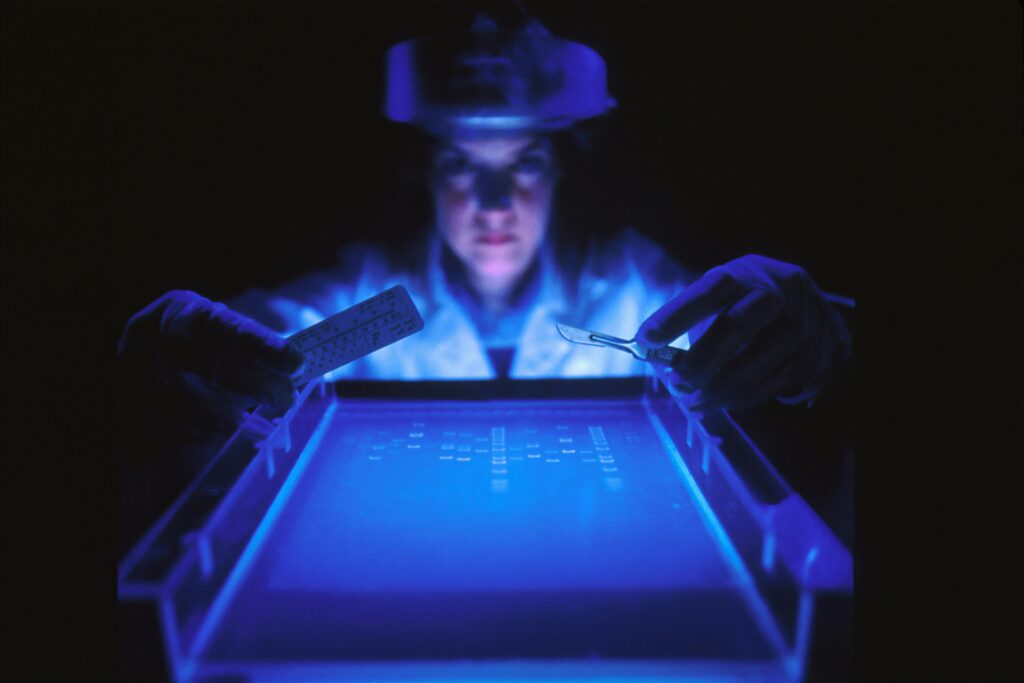
A team of scientists led by Rutgers University has unveiled a groundbreaking development in the field of lighting technology. They have created an eco-friendly, ultra-bright material that emits deep-blue light at approximately 450 nanometers in a light-emitting diode (LED). This advancement promises to enhance energy-efficient lighting systems worldwide.
The newly developed copper-iodide hybrid emitter materials are poised to revolutionize blue LED technologies due to their exceptional qualities. The findings of this research have been published in the prestigious journal, Nature. According to the lead researcher, Jing Li, a Distinguished Professor at Rutgers, “Deep-blue LEDs are at the heart of today’s energy-efficient lighting technologies. However, existing options often present issues with stability, scalability, cost, efficiency, or environmental concerns due to the use of toxic components. This new copper-iodide hybrid offers a compelling solution, leveraging its nontoxicity, robustness, and high performance.”
The Importance of Blue LEDs
LEDs, which use semiconductors to convert electricity into light, have been a cornerstone of modern lighting since the early 1990s. The discovery of blue LEDs was a significant milestone, earning its discoverers the Nobel Prize in Physics in 2014. Blue LEDs are particularly crucial as they are used to create white light, essential for general lighting applications.
In collaboration with scientists from Brookhaven National Laboratory and other international research teams, the Rutgers-led group has been working on new materials to improve existing blue LEDs. Their innovative approach involves a hybrid material combining copper iodide with organic molecules.
Advantages of the New Hybrid Material
The newly developed hybrid copper-iodide semiconductor offers numerous advantages over existing materials used in LEDs. For instance, lead-halide perovskites, while cost-effective, contain toxic lead and are unstable when exposed to moisture and oxygen. Organic LEDs (OLEDs) and colloidal quantum dots, though promising, also face challenges such as structural instability and potential toxicity.
Jing Li highlighted the benefits of the new material, stating, “The new material provides an eco-friendly and stable alternative to what currently exists, addressing some of these issues and may potentially advance LED technology.”
The hybrid copper-iodide material boasts a photoluminescence quantum yield of about 99.6%, converting nearly all received photoenergy into blue light. Blue LEDs made from this material have achieved a maximum external quantum efficiency of 12.6%, among the highest for solution-processed deep-blue LEDs.
Innovative Techniques and Future Applications
One of the secrets to the material’s impressive performance lies in an innovative technique called dual interfacial hydrogen-bond passivation. This method significantly enhances the performance of the LEDs by minimizing defects that can impede the movement of electric charges at the interface of these hybrid materials.
Kun Zhu, a former graduate student at Rutgers and now at the Max Planck Institute in Germany, explained, “Our processing method minimizes defects that can impede the movement of electric charges at the interface of these hybrid materials. This approach could be a versatile strategy for generating high-performance LEDs.”
The technique involves forming hydrogen bonds between layers, improving connections and eliminating efficiency-reducing issues. “Overall, this type of new material is paving the way for better, brighter, and longer-lasting LEDs,” Li added.
Collaborative Efforts and Funding
The research team included several other Rutgers scientists, such as Deirdre O’Carroll, associate professor, and Nasir Javed, doctoral student, from the Department of Chemistry and Chemical Biology and Department of Materials Science and Engineering. Sylvie Rangan, assistant research professor, and Leila Kasaei, postdoctoral research associate, from the Department of Physics and Astronomy, also contributed significantly.
This groundbreaking research was funded by the U.S. Department of Energy, highlighting the importance of government support in advancing scientific innovation. As the world continues to seek sustainable and efficient energy solutions, developments like these pave the way for a brighter and more eco-friendly future.
For more insights into how Rutgers research is shaping the future, stay tuned for further updates.






